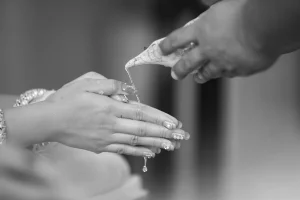Life After Injury: Rehabilitation, Coping & Moving Forward

Injuries are life-disruptive, yet also chances for recovery and resilience. From automobile accidents, falls, or job site accidents, the rehabilitation process consists of mindful changes in daily routines, aggressive recovery practices, and smart support mechanisms.
This guide shows real methods of changing your lifestyle, with emotional health the first priority and including physical, legal, and financial aspects. You can be resilient using the right attitude and lifestyle. In excess of 2.5 million Americans are treated in emergency departments for nonfatal injuries every year, according to the CDC, but most survive after they have recovered with the application of adaptive living at a holistic level.
Assessing and Accepting the First Impression
Step one: honest evaluation. Even in the immediate aftermath of injury, see a doctor to determine the scope of your condition—don’t wait, because early treatment can eliminate long-term complications by up to 30%, research at the American Journal of Preventive Medicine has discovered. Monitor symptoms in a journal: quantify the degree of pain, limitations of movement, and emotional changes such as frustration or anxiety. Acceptance is not abandonment; it’s knowing that informs action.
Emotionally, this phase leaves one in denial or shock. Accept them as normal—research by the Journal of Traumatic Stress has found that 70% of injury survivors experience acute stress in the first month. Fight it with small, achievable goals, like resting without guilt or discussing fear with a close friend. It creates a foundation of compassion for self and therefore vulnerability as a source of good habits.
Reviving Your Daily Habits for Safety and Sustainability
Accident necessitates reorganizing habit. If kept from work or play, reorder the day by energy level: save resting for mornings, light work for midday, and quiet time for night. For instance, if an automobile accident limits driving: try mass transit or ride-sharing—Indianapolis drivers who drive 82% to work might save time as well as anxiety by trying as they recuperate.
Bring adaptive gear in early: work-at-desk ergonomic support or meal planning services to combat physical stress. National Safety Council statistics indicate that risk of re-injury can be lowered by 40% through ergonomic adjustment after injury. Emotionally, this shift fights loneliness—ensure regular off-site check-ins with workers to stay people engaged and create continuity amid change.
Use Targeted Physical Recovery Techniques
Healing is a matter of routine. Hold to your doctor’s regimen: physical therapy, when prescribed, builds tissue and restores function—patients who follow PT heal 50% faster, reports the American Physical Therapy Association. Add low-impact exercise like swimming or yoga, performed to your injury; do it gradually to avoid setback.
Diet matters most: add anti-inflammatory omega-3-dense foods (salmon, walnuts) and vitamin C-dense foods (citrus, bell peppers), which power healing by boosting collagen production. Proper hydration is key—dehydration slows healing by 20%, journal studies of hydration in the Journal of the International Society of Sports Nutrition found. Track weekly to reward progress, validating emotional motivation with tangible results.
Getting Legal Rights and Insurance Benefits
Financial stability lies at the core of emotional serenity. Begin by reporting insurance claims on time—delays reduce payments by 25%, according to a study by insurance firms. Save all the evidence: crime-scene photographs, bills, and witness statements create a strong case.
For severe injuries, refer a personal injury attorney to recover compensation for medical visits, lost earnings, and pain.
More than 12,000 hospitalizations in Indiana alone due to falls occur annually, and laws of premises liability defend victims of careless property owners. Law firms deal with such cases with free consultations to recover the maximum amount of compensation without paying any initial fees.
Insurance juggling is maintaining coverage limits—car policies typically top out at $25,000 for bodily injury in Indiana, so underinsured motorist riders are required. Being proactive about this alleviates worry so energy can be focused on recovery.
Building Emotional Resilience in the Face of Setbacks
Emotions change following trauma: anger at restriction, grief at lost normalcy, or fear of the unknown. Observe these wisely—mindfulness practice, like 10 minutes of morning meditation on Headspace or Insight Timer apps, reduces anxiety by 38%, meta-analyses in JAMA Internal Medicine state.
Repeating narratives: emphasize the wound as a sign of forward movement, not stagnation. Writing prompts—”What strengths has this revealed in me?”—altered perspective, building resilience. Reality-based positive affirmations like “I’m healing one step at a time” replace self-deprecation. Remember emotional recovery follows physical: patience rewards progress, grinding turmoil into determination.
Using Support Networks for Overall Recovery
No one heals alone. Engage friends and family members in concrete support—delegate tasks or errands to offer clarity of mind. Professional help is where it really excels: trauma therapists can desnarl stress tied to injury, with cognitive-behavioral therapy being 60% effective for treating PTSD among survivors, as evidenced by the VA’s research.
Community resources make this work: participate in support groups within organizations like the Brain Injury Association of America, where shared stories make experience normal and combat isolation by providing individuals with a place where they belong. Urban life like Indianapolis, whose cultural landscape is vibrant, introduces virtual concerts by the Indianapolis Symphony Orchestra that are low-effort mood busters. The networks not only provide help but validate feelings, which accelerates emotional recovery.
Planning for Long-Term Prosperity and Prevention
Sustainability sets true recovery. Along with restoration of mobility, include prevention interventions: in-home safety assessments to eliminate slip risk factors, e.g., rug anchoring, which prevent 20% of fall injuries by CDC standards. Re-return to career goals—vocational rehabilitation can match skills with alternative employment, expanding income capacity 15-20% for the injured worker.
Emotionally, create habits of appreciation: daily reckonings of achievement foster optimism. Gradually, scars sharpen thankfulness for wellness—most survivors report increased life satisfaction upon recovery, from longitudinal Health Psychology research. In embracing such transformation, you not only recover but rebirth, ready for a more abounding future.
Trauma healing is hard but transformative. With lifestyle transformation under guidance, wise legal choices, and emotional healing, healing is empowering. Take care of yourself today—little steps build strong immunity.








